Working from home tips
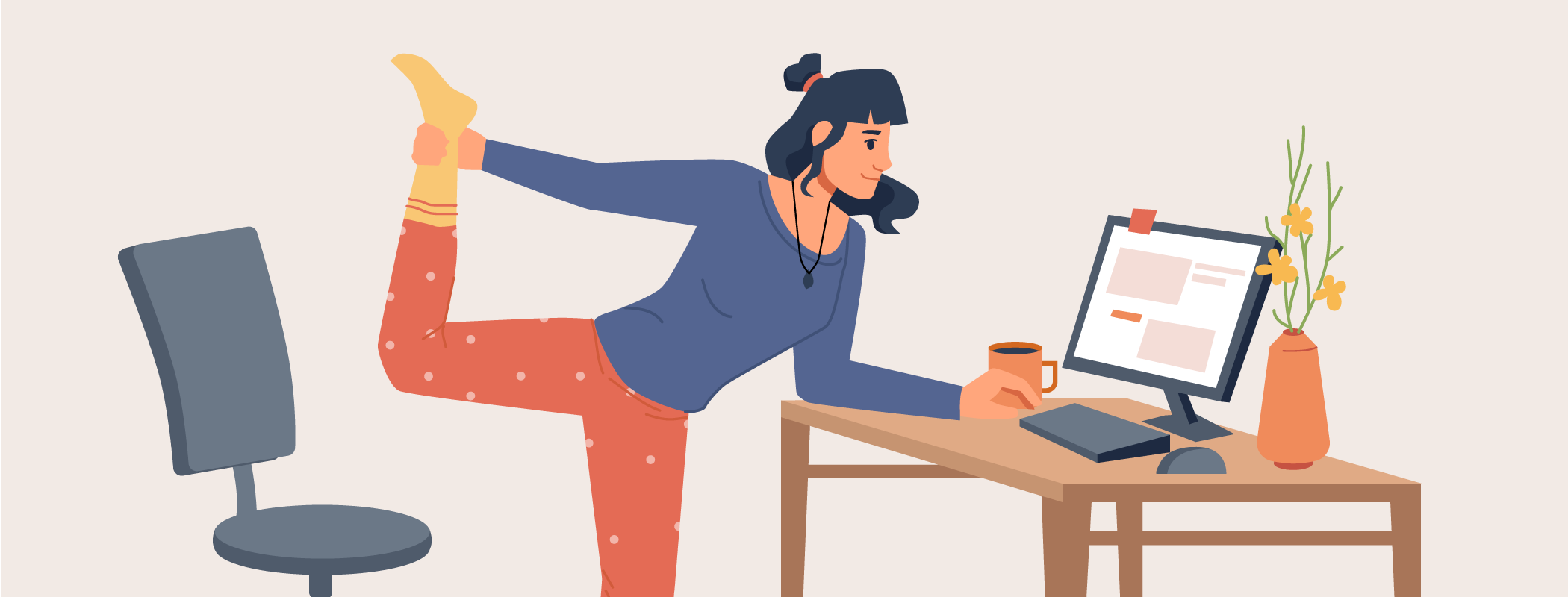
Are you struggling to adjust to working from home? Whether it’s your productivity or the aches and pains you can suffer if your home office isn’t set up just right, working remotely brings challenges. Find out how to avoid these with our working from home tips and guidance.
Are there problems with working from home?

Home working can have a number of benefits and for some people it’s a preferred way of working. Whether it’s cutting down your commute or having more peace and quiet to work on solo projects, you may find working from home suits you well. However, to have the best experience, your workspace must match your needs.
There are several differences between the office and your home office, and adjusting to remote work can mean dealing with challenges. These can be things like your posture, mindset, and the difficulty of separating work and home life – particularly if you don’t have a dedicated office space. There are practical considerations too, such as choosing the right equipment and lighting. For advice on these areas, read our free guides:
Home office set-up
Home office lighting
Common challenges when working from home:
- Inactivity
- Clutter
- Unsuitable equipment
- Equipment set up incorrectly
- Lack of space
- Mindset and motivation
Is homeworking here to stay?
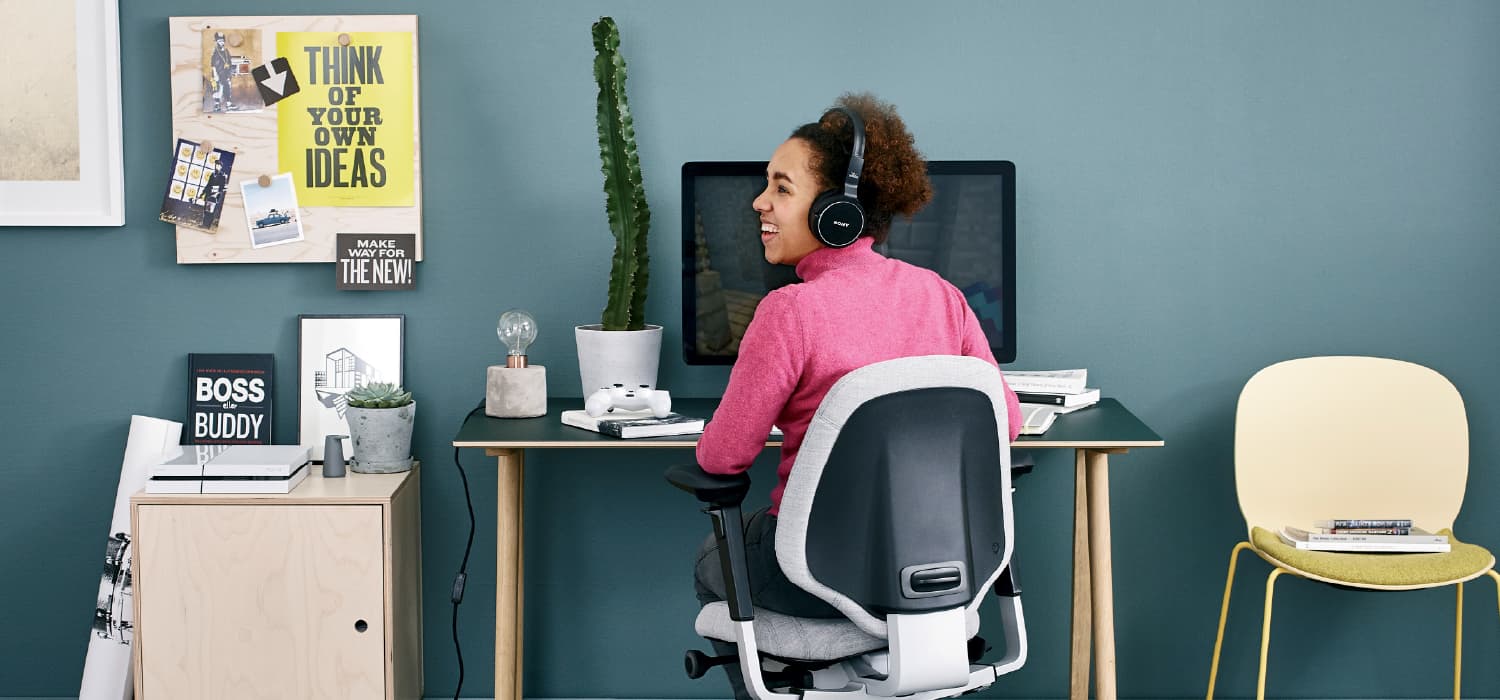
It can be tempting to make do with an imperfect workspace at home, if it’s only temporary. However, it’s important your space is suitable – whether you’re using it for a year, a month, a week, or even just the occasional day.
1. According to our recent study, 58.5% of employers plan to encourage employees to work from home three or more days a week.
2. 26% of UK workers want to continue working from home, according to research by finder.
Working from home tips
To help revitalise your home workspace and set you up for success, we’ve gathered our top tips for working remotely.
1. Combat inactivity

One key difference between office and home working is the amount of incidental activity you’ll do throughout the day, with remote work typically being more stationary. Activities like walking around the office, going to make yourself a tea or coffee, and going out to your car aren’t as frequent, so you might find yourself inactive for longer periods.
There are a number of issues associated with sitting still all day. Some of the biggest risks are:
- Back pain and other MSDs
- Feeling uncomfortable and less productive
- Increased risk of disease, and even death
Studies have linked being inactive with a number of conditions, such as type 2 diabetes and certain types of cancer. On top of this, inactivity costs the UK £7.4 billion annually. So, reducing the time we spend sitting down each day should be a top priority. We can do this in a number of ways:
Targets and trackers
Set yourself goals each day and track your progress. This could mean aiming for 60 minutes of activity throughout your workday, or 10,000 steps a day. Having a goal to reach towards will help motivate you to get moving.
Take regular breaks
You might not feel like you need a break but being strict about the taking them will help you in the long run. Try setting alarms to remind you and blocking off short sections in your work calendar.
If you live with a partner, family or friends, you could arrange to have your breaks together. This way, you’re adding an extra incentive to get out of your seat and enjoy some much-needed movement and socialising.
Use equipment that keeps you mobile
There are lots of brilliantly designed chairs and desks specifically created to keep you active throughout the workday. For instance, a sit-stand desk gives you the option to switch between sitting and standing regularly, and a stand-up chair encourages good posture and movement.
If your job involves a lot of phone calls, using a wireless headset and walking while on a call is another way to stay active.
For more tips on beating inactivity, read our guide: How to combat inactivity when working from home.
2. Set up your workspace carefully
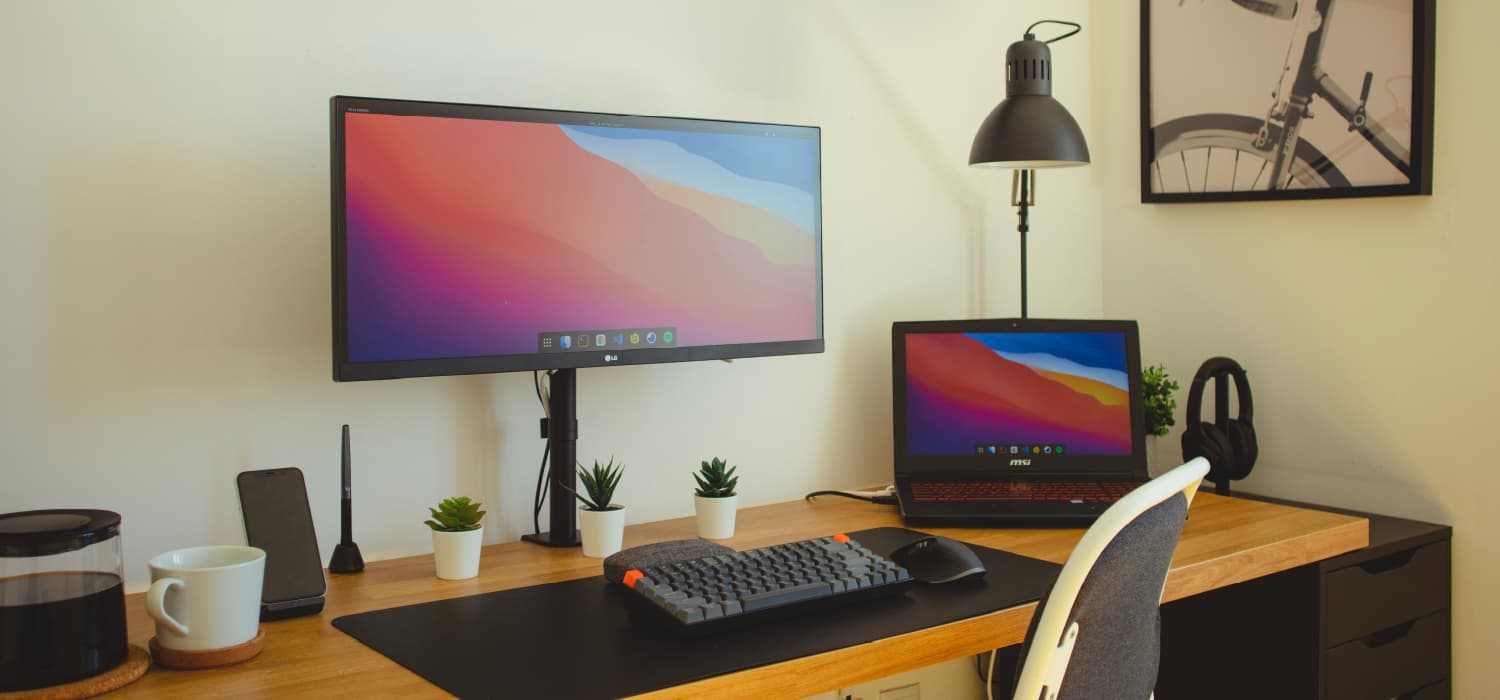
A properly thought-out, practical workspace will help you achieve your work goals from the comfort of your home. Think carefully about the equipment you’ll need, how it’ll fit into the space, and how you’ll use it day to day.
Your screen
Position your screen so it’s at head height and you can view it without bending, squinting, or having to lean forward.
Your keyboard
Choose the right keyboard for the work you do, and your specific needs. For instance, if you suffer from repetitive strain injury (RSI) a split keyboard will encourage the natural handshake position you need.
Your mouse
Use a separate ergonomic mouse rather than a laptop trackpad to help you achieve a comfortable working position.
Your chair
There are many types of ergonomic chairs to choose from – from the more standard models to specialist types with their own benefits. For instance, kneeling chairs can be particularly good for preventing back pain.
Choose your chair carefully and set it up to your match your needs – you can learn more about chair positioning and correct sitting posture with our guide, the Art of Sitting.
Your accessories
Additional equipment in your workspace can help if you need additional support. For instance, use a footrest if your feet don’t comfortably sit flat on the floor, and try a writing slope for better ergonomic positioning while typing or writing.
3. De-clutter your space
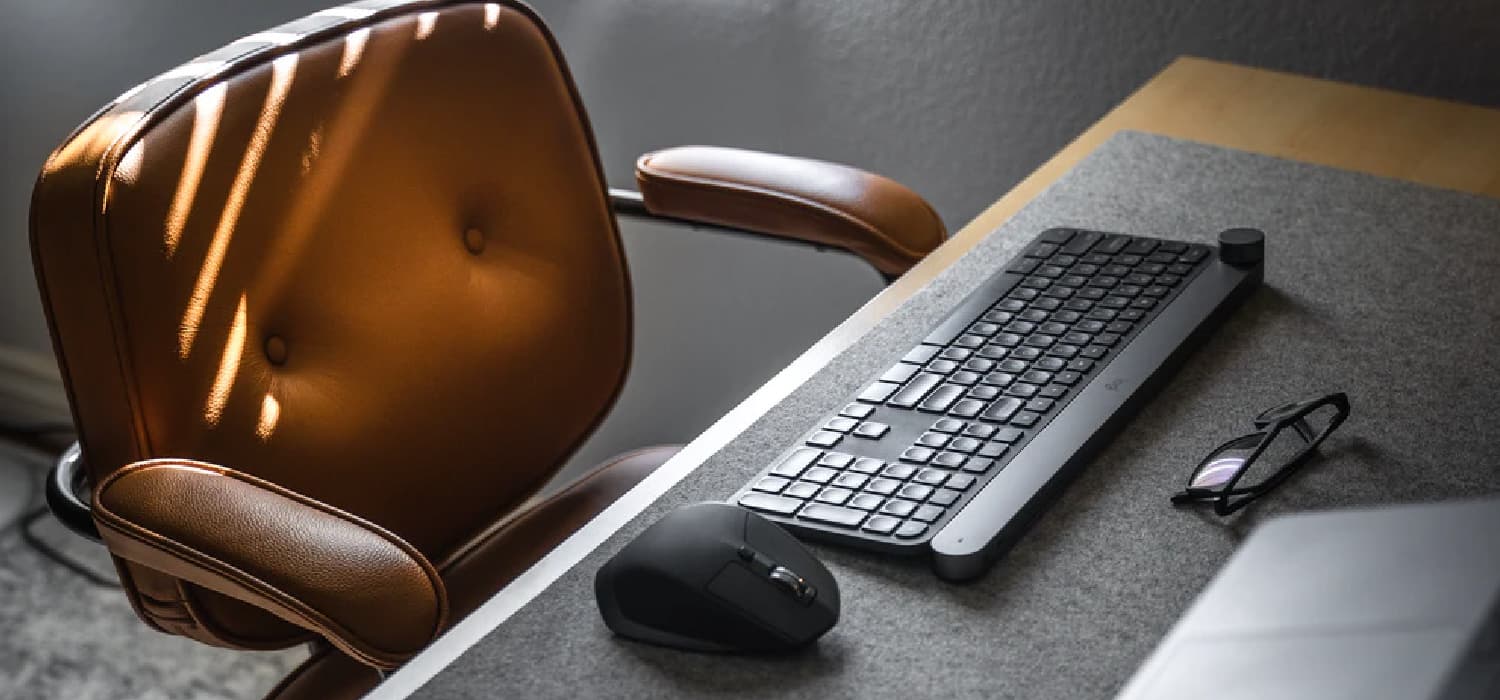
A cluttered workspace is far from ideal. Not only can clutter make it more difficult to work effectively, but it can also affect your wellbeing. There are a few helpful ways to approach clutter:
Split your workspace into zones
When assessing your workspace, evaluate what you use frequently and what’s most important to you. Place the most important equipment so that it’s easy to reach.
If you have items that aren’t vital to your work routine, consider donating or recycling them.
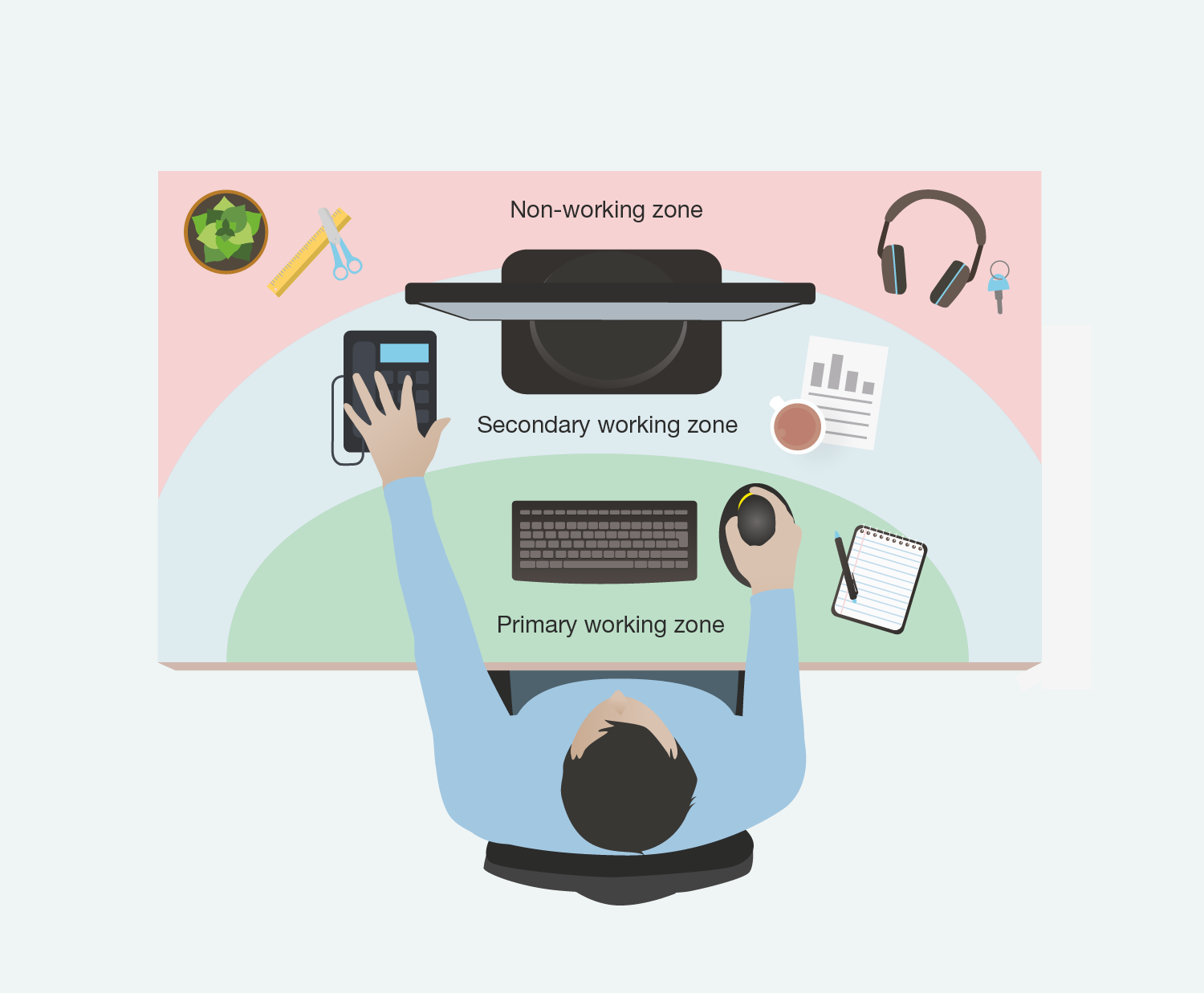
Get storage solutions
To keep your desk clear and usable, use lots of practical storage in your home office. There are many options to choose from:
- Shelves
- Free-standing storage units
- Under-desk pedestals
Go wireless
Another way to limit clutter in your home office is to choose wireless and Bluetooth equipment. Both our wireless mice and wireless keyboards are ergonomically designed, so you get all the advantages of ergonomics with no messy cables.
4. Limit distractions

Distractions can be a barrier to your productivity when working from home. From family and housemates to barking dogs and noise outside, there are lots of day-to-day disturbances that can take you out of the zone and impact your work.
To limit their impact, invest in a good noise-cancelling headset. Not only will this block out background noise, it’ll also improve the audio quality of your calls.
You can also tweak your home office to limit intrusion from the outside world. Slanted blinds are a great option if you’re near a busy street. If your workspace is part of a multipurpose room, like a kitchen or living room, set up a screen divider to reduce visual distractions.
Want more advice on working from home? Read our cheat sheet: 8 workspace tweaks to get into the zone at home.
What next?
You're nearly ready to go ahead and apply your new working from home tips to your life. But first, you might be interested in perusing more of our guides, which have all been produced to help you stay healthy, happy and productive while working from home.





